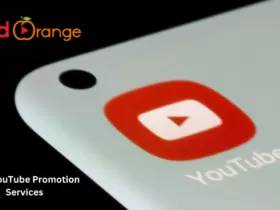You can have a great idea for your video but the impact and success of your content will always rely heavily on how good the script is.
The importance of good scriptwriting should never be underestimated. It is one of the cornerstones of your video production that has the ability to bring your story to life.
As any professional script writer will tell you, there is a structure to how you put together a great script. If you want to have the best chance of creating a compelling and highly watchable video it often requires the script to be structured using proven foundation techniques.
It takes a certain amount of know-how and skill to add the sort of depth and complexity to a script that gets you noticed. Using a professional video production company will help you to achieve these aims, however, it is also a good idea to learn the basics of scriptwriting as it will help you understand the process and even provide some valuable input.
Here is a look at how many of the best scripts are crafted and bring stories to life in such an immersive and compelling way.
Breaking your script down into three acts
The fundamentals of scriptwriting are often about using what is often known as a three-act structure.
What this structure does is break down the various components of what makes a good script by using a formula that is tried and tested.
These three “acts” are the set-up, confrontation, and resolution.
Each of these acts serves a specific purpose. Using this three-act structure allows you to embed and advance a storyline, and it makes it easier to develop the characters used in your script.
Adding this level of depth and character is often critical to the success of your script and how well your video is received.
Act one
This is where you set the scene and set up how the plot develops and what role each character plays in the story you are telling with your video.
Act two
The middle part of your script is all about ascending the action and building up the interest and tension for the person watching your video.


Act three
This part of the script is where you deliver a resolution and wrap up your story to deliver the conclusion that you have chosen.
The basics of scriptwriting are quite easy to grasp when you break the process into these three so-called acts. All you have to do is use this structure as a prompt to create a compelling story that uses a coherent narrative that engages the viewer and makes them care enough to see how it ends.
Let’s look at how to set about writing a good script that has the right level of depth and structure to be very engaging.
Do some research and get some inspiration
Even if you don’t consider yourself to be a natural scriptwriter you can still craft a great script if you follow a proven structure that prompts you to use all the right tools for crafting a storyline that is engaging.
It is always a good idea to read some other scripts and take a close look at their style and techniques. These scripts should provide you with inspiration to write your own story.
Attention to detail
When you are creating a landscape that enables your story to unfold you should pay attention to relevant details such as the setting and time period when the story is set.
All of these layers are designed to enhance the quality of your script and enhance your audience’s experience.
Work on developing your characters
Every good script relies on the creation of well-rounded and believable characters that your audience can believe in. If you can give each character a personality it will help to guide the direction of your storyline and add the sort of depth that is integral to a good script.
Roadmap your storyline
In the same way that you follow a set of directions to get to where you want to go the same principle applies to writing a script.
Organize your story into different components and map out each twist and turn using this structure.
Hone your script with different drafts
It is very unlikely that you will come up with a great script that is ready to use on your first attempt.
All good scriptwriters know that writing your first draft is just the start of your journey. It usually works well when you let all your ideas flow freely and put them down on paper in a draft script.
It is perfectly acceptable to make mistakes and change your mind about characters or even aspects of the plot.
View your first draft as a work in progress and see it as an opportunity to find areas that need improving. It may take numerous attempts to finally end up with a script that you are happy with. Trust the process and don’t be afraid to make some mistakes along the way.
Get feedback on your Scriptwriting
Once you have a draft script that you are happy with it is a good idea to get some feedback from other people who you know and trust to give you an honest assessment of your content.
Every good script writer understands that you often have to fine-tune and polish a script before you finally get to a point where you have something resembling the finished article.
The best way to end up with a fantastic script is to trust the process. Rewrite your script as many times as you feel necessary. It might involve a few tweaks to strengthen character traits or some adjustments to sharpen the dialogue.
All the best scripts were probably rewritten numerous times before they became polished enough to have the right impact.
Crafting a compelling script is not something that comes naturally to all of us. However, by following an established scriptwriting formula you have a better chance of producing something that meets the required standard.
The other option is to leave it to the professionals and ask your chosen video production company to guide you through the process and help you create an engaging script that delivers your chosen message in the most compelling way possible.






























